Over 80% of people experience lower back pain at some point in their lives. And while the default reaction is rest or medication, the real game-changer could be movement.
Strengthening your lower back with bodyweight exercises not only eases pain but builds long-term spinal support and balance — and you don’t even need a gym for it.
Whether you’re stuck at home, on a budget, or just starting your fitness journey, these bodyweight exercises are designed to support your spine, improve posture, and prevent injury — all without any equipment.
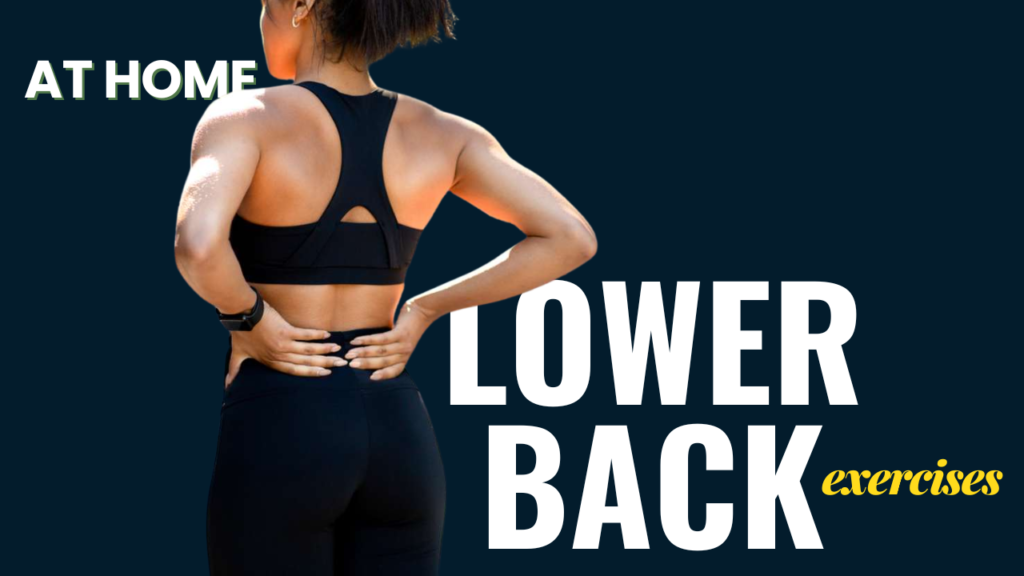
Table of Contents
What to Expect After 30 Days of Lower Back Bodyweight Exercises
| Positive Changes You May Notice | How It Benefits You |
|---|---|
| Reduced lower back pain or stiffness | Freer movement in daily life and workouts |
| Improved posture | Less slouching, more confident upright stance |
| Stronger glutes and core muscles | Better support for your spine and hips |
| Increased lower back endurance | Less fatigue during standing or walking |
| Enhanced flexibility in hips and spine | Smoother bending, squatting, and twisting |
| Better balance and stability | Reduced risk of falls and joint injuries |
| Decreased muscle tightness from sitting | More comfort if you work long hours at a desk |
| More awareness of movement and form | Improved exercise technique and injury prevention |
| Boosted body confidence | Feeling stronger and more capable |
| A new, healthy habit formed | Laying the foundation for long-term back and core health |
Also Read: 13 Equipment-Based Calf Exercises to Power Up Your Lower Legs
Do’s & Don’ts of At-Home Lower Back Exercises
| DO’s | DON’Ts |
|---|---|
| Warm up your body before starting | Don’t skip warm-up or stretch cold muscles |
| Focus on slow, controlled movements | Don’t rush through reps just to finish faster |
| Keep your core engaged during exercises | Don’t let your lower back overarch or sag |
| Start with beginner-friendly moves like bird dog or pelvic tilts | Don’t jump into advanced variations if you’re new or in pain |
| Maintain a neutral spine throughout movements | Don’t twist or bend your back unnaturally during any rep |
| Listen to your body and stop if you feel sharp pain | Don’t push through back pain — it may worsen your condition |
| Perform exercises on a soft surface or yoga mat | Don’t exercise on hard floors without cushioning |
| Breathe steadily — exhale on effort, inhale on release | Don’t hold your breath during movements |
| Be consistent — 3 to 5 times per week for best results | Don’t expect instant results without dedication |
| Cool down and stretch after finishing your workout | Don’t skip cooldown — your back needs time to relax and recover |
Why Strengthen the Lower Back?
Your lower back is part of your body’s core — the unsung hero stabilizing almost every movement. Weak back muscles can lead to poor posture, spinal issues, hip tightness, and even injuries during basic daily activities.
Key Benefits of Bodyweight Lower Back Exercises:
- Improve posture and spinal alignment
- Prevent or reduce chronic back pain
- Strengthen core and pelvic stability
- Enhance flexibility and mobility
- Support better movement and athletic performance
12 At-Home Lower Back Exercises (No Equipment Needed)
Let’s break down each move — what it does and how to do it right.
1. Glute Bridge
Targets: Glutes, hamstrings, lower back
How to:
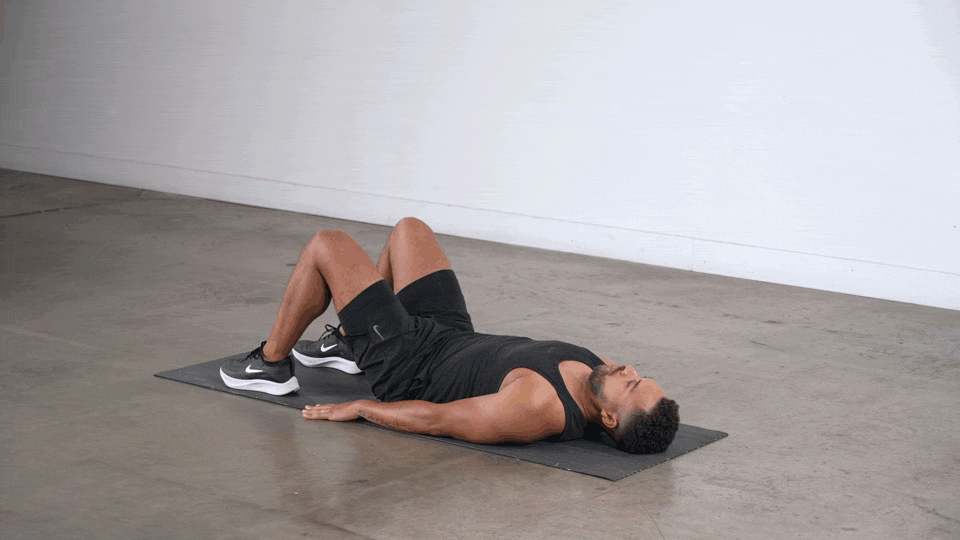
- Lie on your back with your knees bent and feet flat on the floor.
- Keep your arms at your sides.
- Press through your heels and lift your hips towards the ceiling.
- Squeeze your glutes at the top, hold for 2–3 seconds, then lower.
Reps: 3 sets of 12–15
Tip: Avoid overarching your back — focus on controlled glute activation.
Also Read: 11 Abductor Exercises Using Equipment That Boosts Hip Strength
2. Bird Dog
Targets: Lower back, abs, glutes, shoulders
How to:
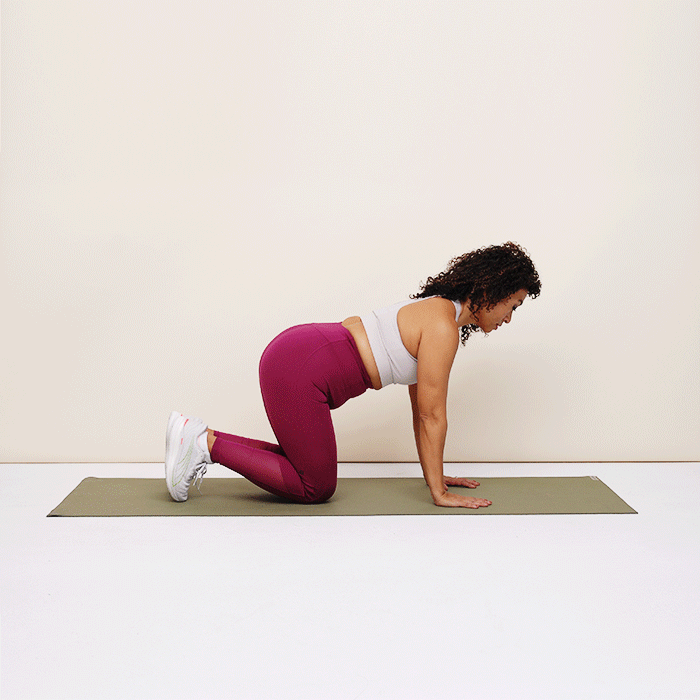
- Start on all fours with your wrists under your shoulders and knees under your hips.
- Extend your right arm and left leg simultaneously.
- Hold for 2–3 seconds while keeping your back flat.
- Return and switch sides.
Reps: 3 sets of 10 per side
Fact: Bird Dog builds cross-body stability — vital for spinal integrity.
3. Superman Hold
Targets: Lower back, glutes, hamstrings
How to:
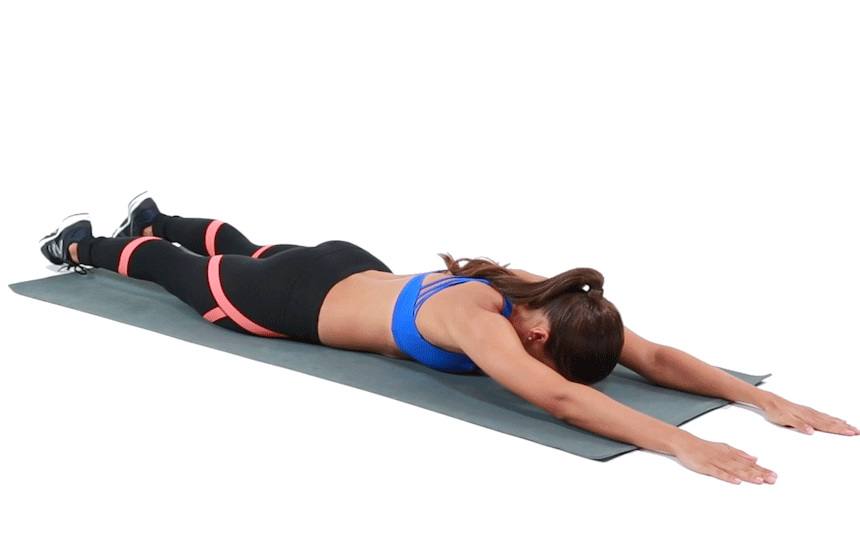
- Lie face-down with arms and legs extended.
- Lift both arms and legs off the floor, engaging your back and glutes.
- Hold for 10–20 seconds, then lower.
Reps: 3–5 rounds
Myth Buster: Many think this is only for advanced athletes — but it’s beginner-friendly if done properly.
4. Pelvic Tilt
Targets: Core, lower back
How to:

- Lie on your back with your knees bent.
- Gently flatten your lower back against the floor by tucking your pelvis.
- Hold for 5 seconds, then release.
Reps: 3 sets of 10–12
Tip: This gentle movement helps improve lumbar spine control and awareness.
Also Read: Top 10 Bodyweight Tricep Exercises: Build Strong, Sculpted Arms Anywhere
5. Wall Sit (Back-Focused)
Targets: Lower back, thighs, glutes
How to:

- Stand with your back against a wall and slide down until your knees are at 90 degrees.
- Keep your back flat and core tight.
- Hold for 30–60 seconds.
Sets: 3 rounds
Fun Fact: This isometric move strengthens spinal endurance without motion.
6. Reverse Tabletop Bridge
Targets: Glutes, core, lower back, shoulders
How to:
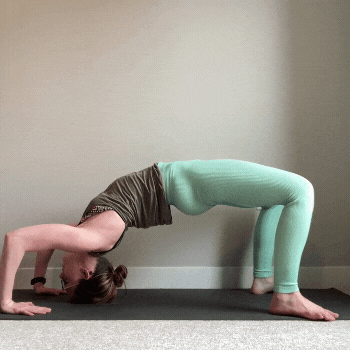
- Sit with your knees bent and hands placed behind you.
- Lift your hips until your torso forms a tabletop.
- Squeeze your glutes, hold for 2–3 seconds, then lower.
Reps: 3 sets of 10
Tip: Great for activating postural muscles and shoulder alignment.
7. Plank to Downward Dog
Targets: Entire core, especially lower back and shoulders
How to:
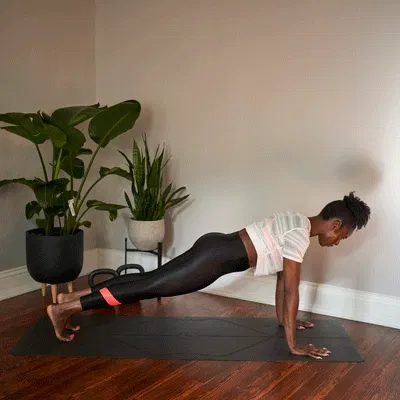
- Begin in a plank position.
- Push your hips back and up into a downward dog.
- Hold for 2 seconds and return to plank.
Reps: 3 sets of 8–10 reps
Benefit: Combines strength and flexibility for spinal decompression.
Also Read: Top 10 Equipment-Based Tricep Exercises That Will Sculpt Your Arms
8. Quadruped Rock Back
Targets: Lower back, hips, spine mobility
How to:
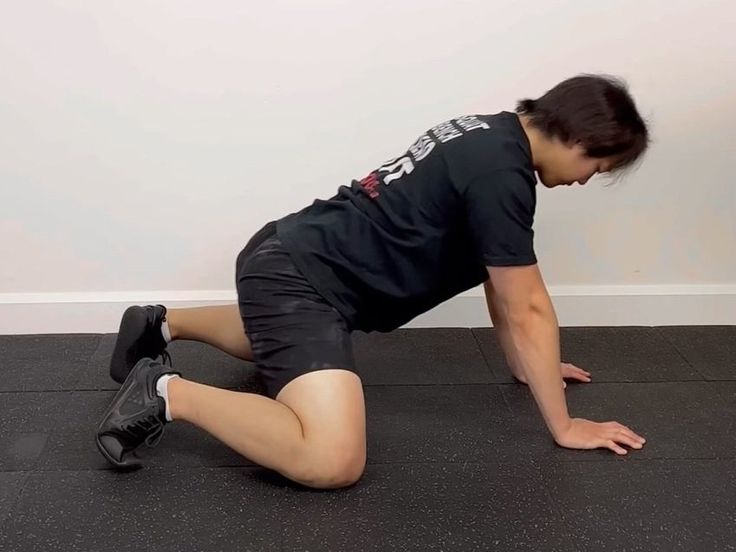
- Start on hands and knees.
- Push your hips back toward your heels while keeping your back flat.
- Return to start.
Reps: 3 sets of 10
Bonus: Helps reset the spine and hips — great for desk workers.
9. Leg Raises (Bent Knee)
Targets: Core, hip flexors, lower back
How to:

- Lie on your back with your knees bent.
- Slowly raise both knees toward your chest, keeping the core tight.
- Lower slowly without touching the ground.
Reps: 3 sets of 10
Tip: Keep your lower back pressed against the floor to avoid strain.
10. Cobra Stretch (Active Version)
Targets: Lower back, abs
How to:
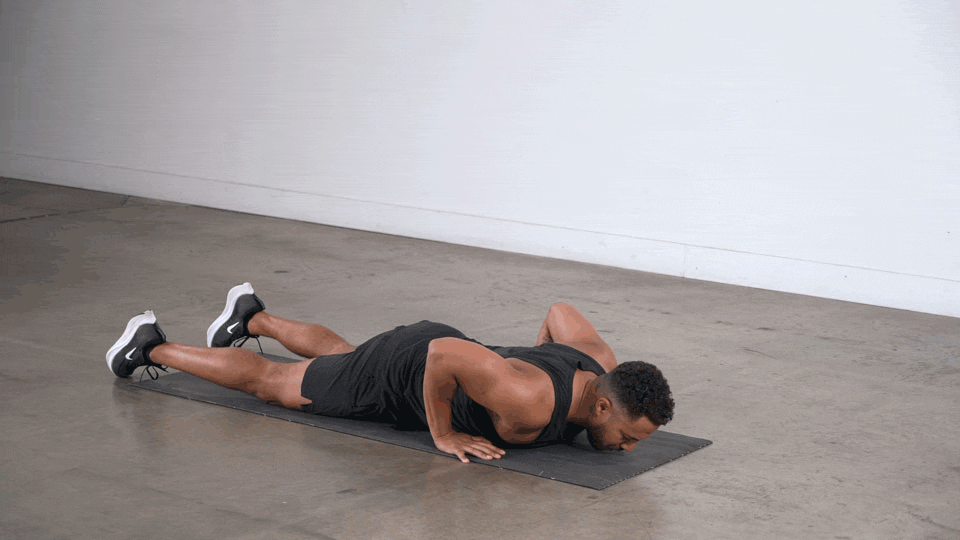
- Lie on your stomach with your hands under your shoulders.
- Gently push up while keeping hips grounded.
- Squeeze lower back slightly and hold for 5 seconds, then return.
Reps: 5–8 active holds
Myth Buster: Often confused with passive stretching — this is dynamic and builds resilience.
Also Read: 13 Best Bodyweight Chest Exercises to Sculpt Your Upper Body
11. Side-Lying Leg Lift
Targets: Obliques, glutes, lower back
How to:

- Lie on one side, legs straight.
- Lift your top leg upward and hold for 2 seconds.
- Lower with control.
Reps: 10–12 per side
Bonus: Helps improve lateral core stability — important for balance.
12. Dead Bug
Targets: Lower back, deep core muscles
How to:
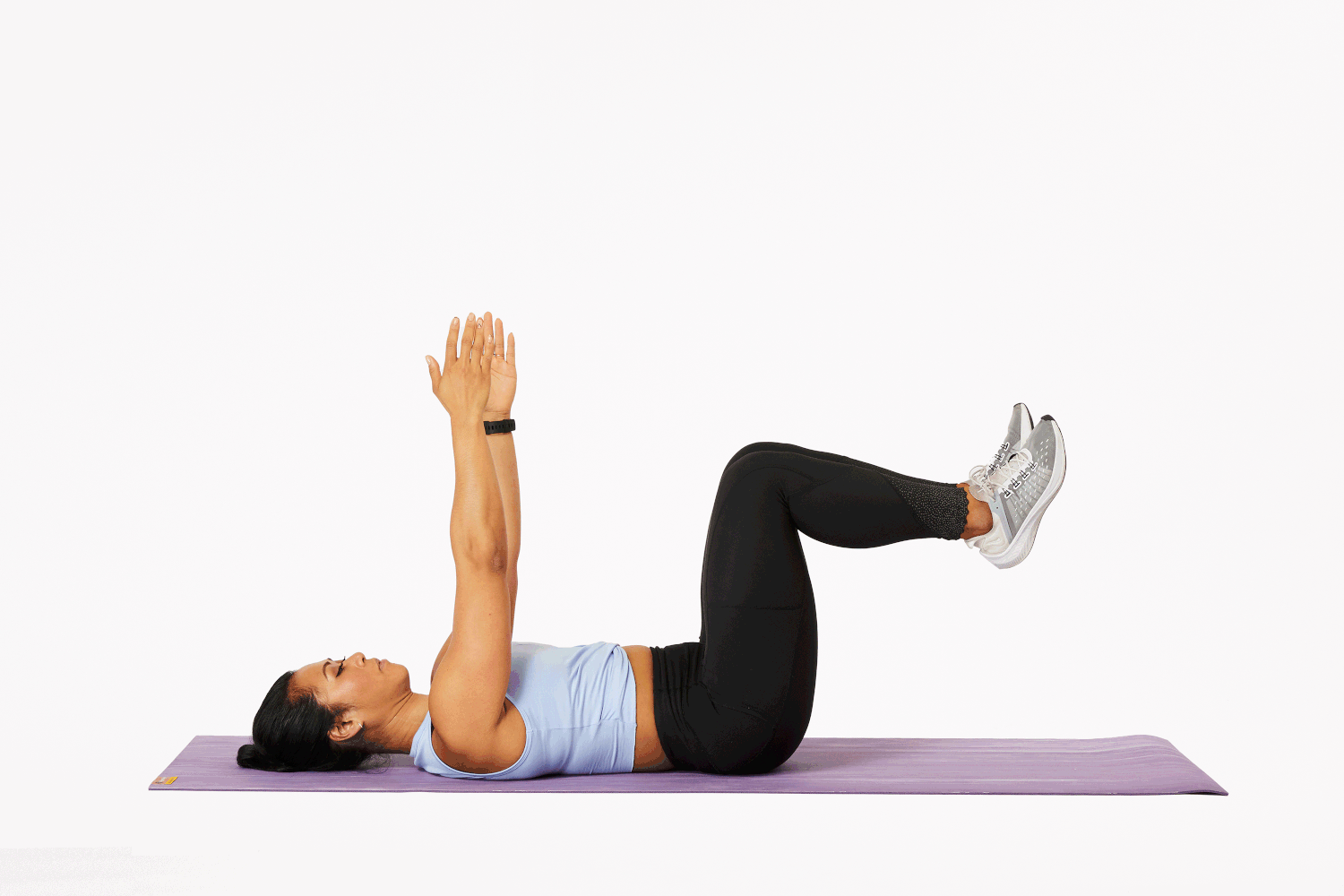
- Lie on your back, knees bent at 90°, arms straight up.
- Extend one arm and the opposite leg, keeping your lower back on the floor.
- Return to the center and repeat on the other side.
Reps: 3 sets of 10 per side
Did You Know?
Dead bugs engage your transverse abdominis — the corset muscle for your spine.
Also Read: 12 Best Equipment-Based Chest Exercises to Build a Stronger Upper Body
Wrap-Up: No Gear, Just Results
Your lower back is your body’s anchor. These 12 bodyweight exercises don’t just alleviate pain — they build lifelong support without needing equipment or a gym. From beginners to fitness buffs, this routine fits into any lifestyle and can be done in under 20 minutes a day.
Pro Tip: Be consistent. Start slow and focus on proper form. Over time, you’ll notice reduced stiffness, better mobility, and more power in your daily movement.
Frequently Asked Questions (FAQs)
Are bodyweight exercises enough to strengthen the lower back?
Absolutely. Bodyweight movements, when done consistently with proper form, can significantly strengthen the lower back and core. Many physical therapists even recommend them for rehabilitation and pain prevention.
How often should I do these exercises for the best results?
Aim for 3–5 times per week, depending on your fitness level. For beginners, 3 days is a solid start. As your back gets stronger, you can gradually increase frequency or intensity.
Can I do these exercises if I have mild lower back pain?
Yes — in fact, many of these exercises are designed to relieve and prevent lower back pain. Start with gentle movements like pelvic tilts, bird dogs, and glute bridges. Always consult a healthcare provider if you’re unsure.
Should I warm up before doing these exercises?
Yes. A short warm-up (3–5 minutes) with movements like hip circles, cat-cow stretches, or gentle walking helps loosen your spine and activate the core safely.
How long does it take to see improvement in lower back strength?
Typically, within 2 to 4 weeks of consistent training, most people notice reduced stiffness, better posture, and improved mobility. Long-term back health comes from ongoing practice.
What if my lower back hurts during the exercise?
Stop immediately. Lower back pain during movement can be a sign of improper form or overexertion. Recheck your posture or switch to lower-intensity moves. If pain persists, consult a medical professional.
Do I need a yoga mat or any gear to do these at home?
While not mandatory, a yoga or exercise mat adds comfort and support, especially for floor-based moves. No equipment is required otherwise.
Can these exercises help improve posture too?
Definitely. Many of these exercises target the deep core and spinal stabilizers, which play a key role in upright posture and reducing slouching.
Are these exercises safe for beginners or seniors?
Yes. The routine includes beginner-friendly and low-impact moves ideal for seniors. Start with fewer reps and build up slowly with control.
Can I combine these with other workouts?
Yes! These exercises pair well with walking, yoga, stretching, and full-body workouts. They’re great for warming up, cooling down, or a dedicated core session.










